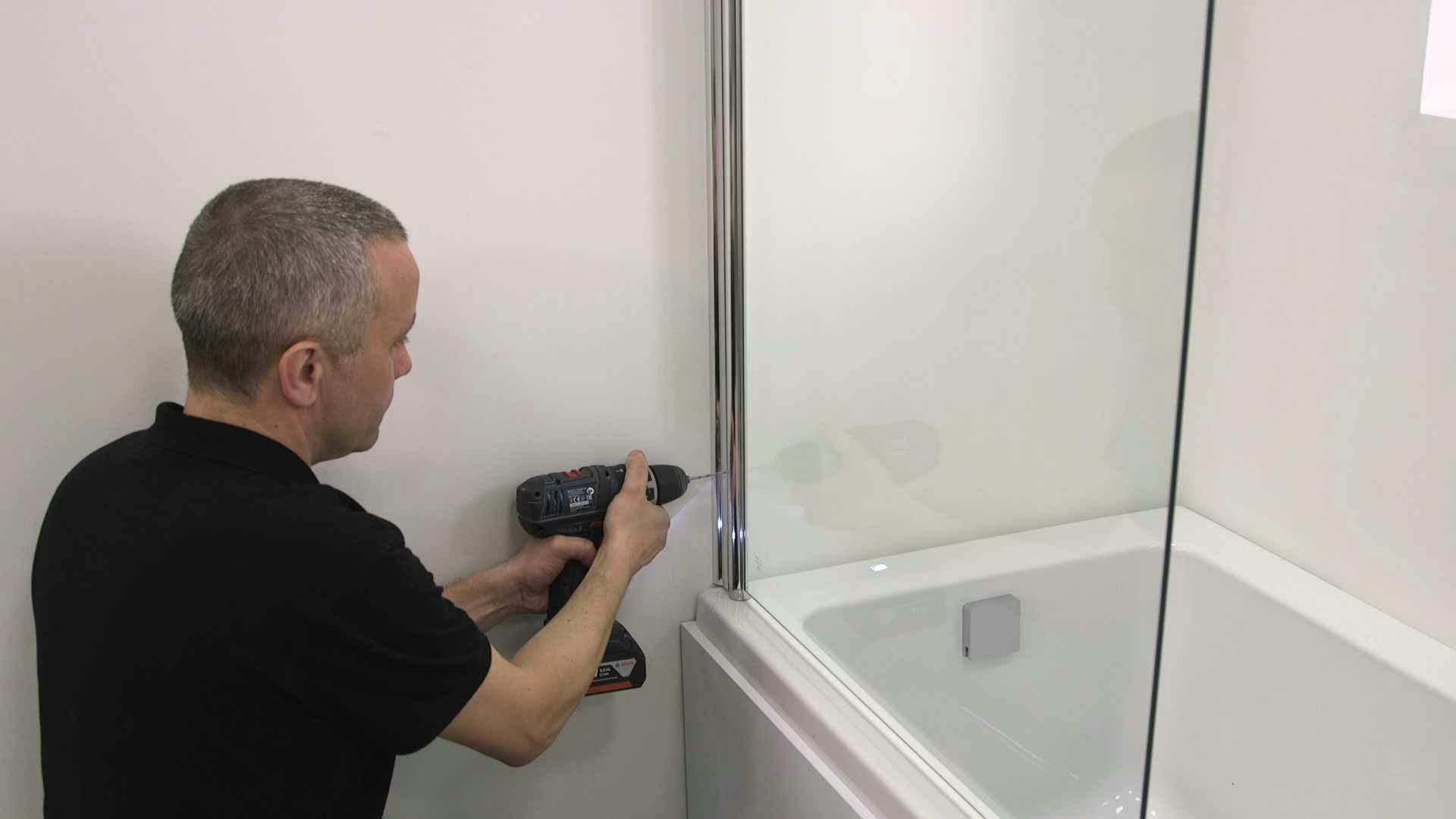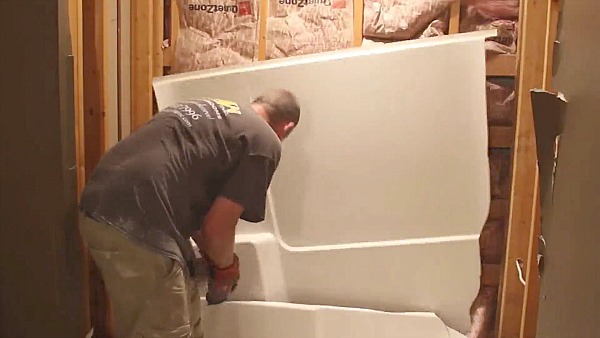Discovering Essential Plumbing Skills is Crucial When Installing a Bathtub
Discovering Essential Plumbing Skills is Crucial When Installing a Bathtub
Blog Article
How do you feel when it comes to How to Install a Bathtub: Install an Acrylic Tub and Tub Surround?

Installing a bath tub isn't specifically brain surgery, yet it does require strong plumbing, woodworking, as well as often, tiling abilities. Replacing an old bathtub with a brand-new one is additionally a moderately challenging task. If the old bathtub is readily accessible, the task can move immediately; if you have to open up a wall to get rid of the old tub as well as place the new tub, the job is a lot harder. In either instance, the project is within a home handyman's skills, although you will certainly need an assistant to leave the old bathtub and embeded in the new one. Make certain you have qualified on your own for the job and also fit trying it. Rather than working with a professional to take over a halfway-completed task, it is far better to take into consideration utilizing one prior to you start. Chances are you might require a professional plumber to make tube links.
This short article will certainly assist you install a brand-new tub in your restroom if you have currently gotten a new bathtub as well as don't require to alter the plan of your previous water system pipes.
Your devices and product checklist need to comprise the following:
Removing Old Taps
If you require to replace old faucets with brand-new ones as a part of your setup, then the first thing you need to do is detach the supply of water. After doing so, turn on the taps to drain any kind of water staying in the system. The process of getting rid of the existing faucets can be rather bothersome due to the restricted gain access to that is typically the instance.
Make use of a basin wrench (crowsfoot spanner) or a tap tool to reverse the nut that connects the supply pipes to the taps. Have a fabric ready for the staying water that will certainly originate from the pipes. When the supply pipelines have actually been eliminated, make use of the exact same device to loosen up the nut that holds the faucets onto the bath/basin. You will need to stop the single taps from transforming throughout this procedure. Once the faucets have actually been removed, the holes in the bath/basin will have to be cleansed of any old sealing compound.
Before proceeding to fit the new taps, contrast the pipeline links on the old faucets to the brand-new taps. If the old taps are longer than the new faucets, after that a shank adapter is needed for the new faucets to fit.
Suitable New Touches
If the tails of the brand-new faucets are plastic, after that you will require a plastic adapter to stop damages to the thread. One end of the adapter fits on the plastic tail of the tap and the other end gives a link to the current supply pipelines.
If you need to fit a monobloc, after that you will call for decreasing couplers, which connects the 10mm pipe of the monobloc to the conventional 15mm supply pipeline.
Next off, place the faucet in the installing hole in the bath/basin making certain that the washers are in location between the faucet and the sink. Safeguard the faucet in position with the producer given backnut. When the faucet is securely in position, the supply pipelines can be attached to the tails of the faucets. The taps can either be connected by using corrugated copper piping or with typical tap adapters. The previous kind should be attached to the faucet ends first, tightening up just by hand. The supply pipes can later on be connected to the various other end. Tighten up both ends with a spanner after both ends have actually been connected.
Installing the Bathtub
Utilizing both wooden boards under its feet, put the tub in the required placement. The wood boards are practical in uniformly spreading out the weight of the bath tub over the location of the boards rather than focusing all the weight onto 4 tiny points.
The next goal is to guarantee that the bath tub is leveled all round. This can be achieved by inspecting the spirit level and also changing the feet on the bath tub until the spirit level checks out degree.
To mount faucets, fit all-time low of the outermost versatile tap port to the appropriate supply pipe by making a compression sign up with; then do the same for the other faucet.
Turn on the supply of water and also examine all joints as well as new pipework for leaks and tighten them if necessary. Fill up the bath tub as well as additionally check the overflow outlet and also the regular outlet for leaks.
Lastly, fix the bath paneling as explained in the maker's user's manual. Tiling and also securing around the bathtub ought to wait until the tub has actually been made use of at least once as this will resolve it right into its last setting.
Planning for the Installation
Firstly, the supporting frame provided with the bathroom should be fitted (if required) according to the manufacturer's guidelines. Next off, fit the taps or mixer to the tub. When fitting the faucet block, it is important to see to it that if the faucet includes a plastic washing machine, it is fitted between the bath and also the taps. On a plastic bathroom, it is likewise sensible to fit a sustaining plate under the taps device to prevent strain on the bath tub.
Fit the versatile faucet connectors to the bottom of both taps utilizing 2 nuts and olives (often provided with the bathtub). Fit the plug-hole outlet by smearing mastic filler round the sink outlet opening, and then pass the outlet with the hole in the bathroom. Use the nut supplied by the maker to fit the plug-hole. Examine the plug-hole electrical outlet for an inlet on the side for the overflow pipe.
Next, fit completion of the versatile overflow pipe to the overflow electrical outlet. Afterwards, screw the pipeline to the overflow face which must be fitted inside the bath. Make sure you make use of all of the supplied washing machines.
Connect the catch to the bottom of the waste outlet on the bath tub by winding the thread of the waste outlet with silicone mastic or PTFE tape, and also screw on the trap to the electrical outlet. Attach all-time low of the overflow tube in a comparable manner.The bath ought to currently be ready to be suited its last placement.
Tiling Around the Tub
In the area where the bath fulfills the floor tile, it is required to secure the joins with a silicone rubber caulking. This is very important as the installation can relocate sufficient to crack a rigid seal, causing the water to permeate the wall surface between the bath as well as the tiling, causing issues with moisture and possible leakages to the ceiling listed below.
You can select from a variety of coloured sealers to assimilate your fixtures and installations. They are offered in tubes and cartridges, and also can sealing spaces up to a size of 3mm (1/8 inch). If you have a larger void to fill up, you can fill it with spins of soaked paper or soft rope. Bear in mind to always load the bathtub with water prior to sealing, to enable the movement experienced when the bathtub remains in use. The sealant can crack fairly early if you do not consider this movement before sealing.
Conversely, ceramic coving or quadrant floor tiles can be made use of to border the bath or shower tray. Plastic strips of coving, which are easy to use as well as reduce to size, are also easily readily available on the marketplace. It is a good idea to fit the ceramic tiles using waterproof or water resistant adhesive and also cement.
Bathtub Installation
How Important Is A Bathtub To Your Home?
High-quality baths, showers, and other bathroom updates are necessary when considering a smart investment in your home. It’s a room that you go to every day and one that is constantly being used by guests.The bathroom is one of the top trafficked rooms in a home and also one of the most valuable in terms of home resale.
Install Piping Before Tub
You will be using your existing drain and waste vent system, but pipes required include the hot and cold water supply lines and a pipe leading to a shower head. A mixing valve and shower head are also needed. Air chambers may be required.
Position the Tub
Lower the tub into place so that the continuous flange fits against the wall studs and rests on 1’x4' or 2’x4' supports. Anchor the tub to the enclosure with nails or screws inserted through the flanges into the studs.
NOTE: Remember, bathtubs and shower stalls may require support framing. A bathtub filled with water is extremely heavy, so check building codes and framing support before installing the tub.
Assemble Drain Connections
Assemble the bathtub drain connections by connecting the tub overflow with the tub drain above the trap, not beyond it. The trap will have a compression fitting that screws over the arm of the overflow assembly.
Place a Pipe For the Shower Head
First, locate a brass female threaded winged fitting and attach it to a framing support via a screw or a nail. Then run a pipe up the wall for the shower head. Sweat or solder the other side of the brass fitting to the top of the pipe.
Attaching Hot and Cold Water Lines
Attach your water lines for both hot and cold by sweating these directly into the hot and cold ports of the mixing valve. The mixing valve will be how water enters the tub’s system, not by the pipes themselves.
Install the Spout
Extend a piece of 1/2 inch pipe, or whichever length is specified in the manufacturer’s instructions, for the tub spout. Sweat on a male threaded fitting at the end of the pipe or use a brass nipple of the proper length and a 1/2 inch cap.
NOTE: At this point you should have your rough-in plumbing work inspected before proceeding further.
Check For Leaks
Restore the water pressure and check the drain connection and the supply pipes for any sign of leaking.
estore the Bathroom Wall
Replace the wall with moisture-resistant drywall as a base for your wall covering. Seal the joints between the wall and your new tub with silicone caulk as protection against water seepage.
https://www.berkeys.com/2016/12/02/bathtub-installation-dallas/

I recently found that entry on How to Install a Bathtub Yourself while scouting around the internet. Please take the time to promote this blog posting if you liked it. Many thanks for your time. Come back soon.
Need help? Call. Report this page